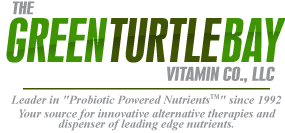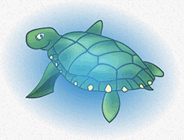Possible Nutrient Deficiencies: Gums, Lips, Teeth, Tongue, Salivary glands
Excesses Attributed to Certain Disorders
Gums
- low Vitamin C
Bright Red (marginal)
- high Vitamin A (chronic)
Gingival Hypertrophy
- low Vitamin C (scurvy)
Gingivitis
- low Niacin
- low Riboflavin
- low Vitamin A
low Vitamin C (scurvy)
Hemorrhages may precede a hyperplastic hemorrhagic gingivitis with redding blue edematous, friable gums and localized necrotic lesions.
Lips
Cheilitis (angular stomatitis; inflammation, with fissures radiating from the corners of the mouth)
- low Folic Acid
- low Iron
- low Niacin
- low Pantothenic Acid
- low Protein
- low Riboflavin
- high Vitamin A
- low Vitamin B6
Dry & Fissured
- low Niacin (pellagra)
- low Riboflavin
also smooth
high Vitamin A
Salivary Glands
- high Iodine
Sialadenitis(inflammation)
high Iodine
Teeth
- low Calcium
- low Fluorine
- low Phosphorus
- low Protein-Calorie
Loose
- low Vitamin C (scurvy)
Mottling of Enamel
- high Fluorine (fluoride)
Periodontal Disease
low Calcium
Tongue
Ignore tongue color in evaluating patients whose hemoglobins are below 8 g/dl because severe anemia will make tongue color normal (Friedman PJ, Hodges RE. Tongue colour and B-vitamin deficiencies. Letter. Lancet i:1159-60, 1977).
Acute Glossitis (bright scarlet red, painful, inflamed tongue with prominent papillae)
-
low Folic Acid (mild)
-
low iron (mild)
-
low Niacin (pellagra) (mild)
-
low Riboflavin (mild)
-
high Vitamin B6 (mild)
-
low Vitamin B12 (mild)
Atrophic Glossitis (smooth, small, glistening, non-painful tongue with atrophy of the filiform papillae)
Patients tend to have multiple nutritional deficiencies (Drinka PJ, Langer EH, Voeks SK, et al. Nutritional correlates of atrophic glossitis: possible role of vitamin E in papillary atrophy. J Am Coll Nutr 12 (1);14-20, 1993).
“The thin epithelium of the ‘bald’ tongue seems to be a poor veil over the capillary bed, thereby yielding an abnormally blue or cyanotic tongue. Patients with severe anaemia and papillary atrophy may retain a normal tongue colour because the capillary bed is pale rather than cyanotic” (Friedman PJ, Hodges RE. Tongue colour and B-vitamin deficiencies. Letter. Lancet i:1159-60, 1977).
There is an 80% chance of a niacin or riboflavin deficiency in a patient without hypoxemia or severe anemia whose tongue shows papillary atrophy along with an abnormal color (Leevy CM, Baker H, TenHove W, et al. Am J Clin Nutr 16:339, 1964
- low Biotin (rare)
- low Folic Acid (chronic or in remission)
- low Iron (chronic)
- low Niacin (chronic)
- low Protein
- low Riboflavin
- low Vitamin B6
- low Vitamin B12 (chronic or in remission)
- low Vitamin C
- low Vitamin E
-with Magenta color (deep, purplish-red tongue)
“The cyanotic tongue colour in hypoxaemia cannot be distinguished clinically from that produced by nutritional deficiencies. Hypoxaemia, however, does not lead to papillary atrophy, so a bald tongue is a clue to underlying B-vitamin deficiencies” (Friedman PJ, Hodges RE. Tongue colour and B-vitamin deficiencies. Letter. Lancet i:1159-60, 1977).
- low Biotin (rare) – also swollen and painful
- low Niacin (pellagra) (more common) – also swollen, raw and fissured
- low Pantothenic Acid – usually painless
- low Riboflavin (more common) – also dry; painless or sore; may be swollen
with Black color
- low Niacin (pellagra) (less common)
low Riboflavin (less common)




